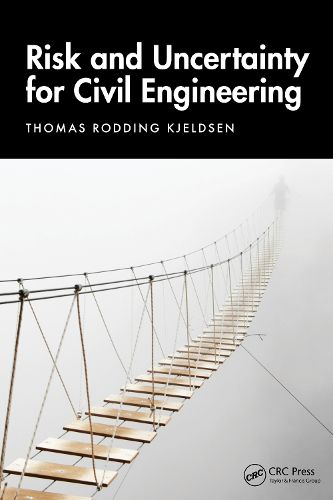Readings Newsletter
Become a Readings Member to make your shopping experience even easier.
Sign in or sign up for free!
You’re not far away from qualifying for FREE standard shipping within Australia
You’ve qualified for FREE standard shipping within Australia
The cart is loading…






This textbook introduces the fundamental concepts of probability, risk, and uncertainty, and shows their relevance in civil engineering projects. With an emphasis on applied probability and statistics, the book aids students in developing an intuitive understanding of the methods to apply in practice.
Drawing from real-world examples, readers are introduced to risk assessment and analysis techniques, enabling them to identify, evaluate, and prioritise potential risks. Examples are provided of how spreadsheet tools such as Microsoft Excel can be used to solve problems involving probability, and practical approaches such as Monte Carlo simulations and decision trees are explained in a clear, accessible manner, empowering students to make informed decisions under uncertain and variable conditions. The book also emphasises the importance of effective communication, equipping students with essential skills for working in multidisciplinary teams and with different stakeholders.
Risk and Uncertainty for Civil Engineering serves as an introductory textbook for undergraduate students in civil engineering, as well as a useful primer for postgraduate students.
$9.00 standard shipping within Australia
FREE standard shipping within Australia for orders over $100.00
Express & International shipping calculated at checkout
This textbook introduces the fundamental concepts of probability, risk, and uncertainty, and shows their relevance in civil engineering projects. With an emphasis on applied probability and statistics, the book aids students in developing an intuitive understanding of the methods to apply in practice.
Drawing from real-world examples, readers are introduced to risk assessment and analysis techniques, enabling them to identify, evaluate, and prioritise potential risks. Examples are provided of how spreadsheet tools such as Microsoft Excel can be used to solve problems involving probability, and practical approaches such as Monte Carlo simulations and decision trees are explained in a clear, accessible manner, empowering students to make informed decisions under uncertain and variable conditions. The book also emphasises the importance of effective communication, equipping students with essential skills for working in multidisciplinary teams and with different stakeholders.
Risk and Uncertainty for Civil Engineering serves as an introductory textbook for undergraduate students in civil engineering, as well as a useful primer for postgraduate students.